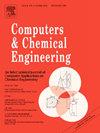Models, modeling and model-based systems in the era of computers, machine learning and AI
IF 3.9
2区 工程技术
Q2 COMPUTER SCIENCE, INTERDISCIPLINARY APPLICATIONS
引用次数: 0
Abstract
Models, representing a system under study with respect to problems such as process design, process control, product synthesis and many more, are at the core of most computer-aided solution techniques. The representation of a system through a model is done in different ways, such as, symbols, data, mathematical equations, and/or some combination of these. The workflow or process of creating a proxy mathematical representation (model) of a given target system is referred to as modeling. Model-based software tools incorporate the developed models within the steps of their systematic workflow through simultaneous or decomposed solution strategies related to synthesis, design, analysis, etc., of specific systems. In this perspective paper we highlight the various ways systems can be represented by models, the different ways the required models are developed through modeling techniques, and examples of model-based software tools developed to solve different process and product engineering problems. Two types of systems - process systems and chemical systems, are considered. Important issues and challenges are highlighted and perspectives on how they can be addressed are presented.
求助全文
约1分钟内获得全文
求助全文
来源期刊

Computers & Chemical Engineering
工程技术-工程:化工
CiteScore
8.70
自引率
14.00%
发文量
374
审稿时长
70 days
期刊介绍:
Computers & Chemical Engineering is primarily a journal of record for new developments in the application of computing and systems technology to chemical engineering problems.
 求助内容:
求助内容: 应助结果提醒方式:
应助结果提醒方式:


